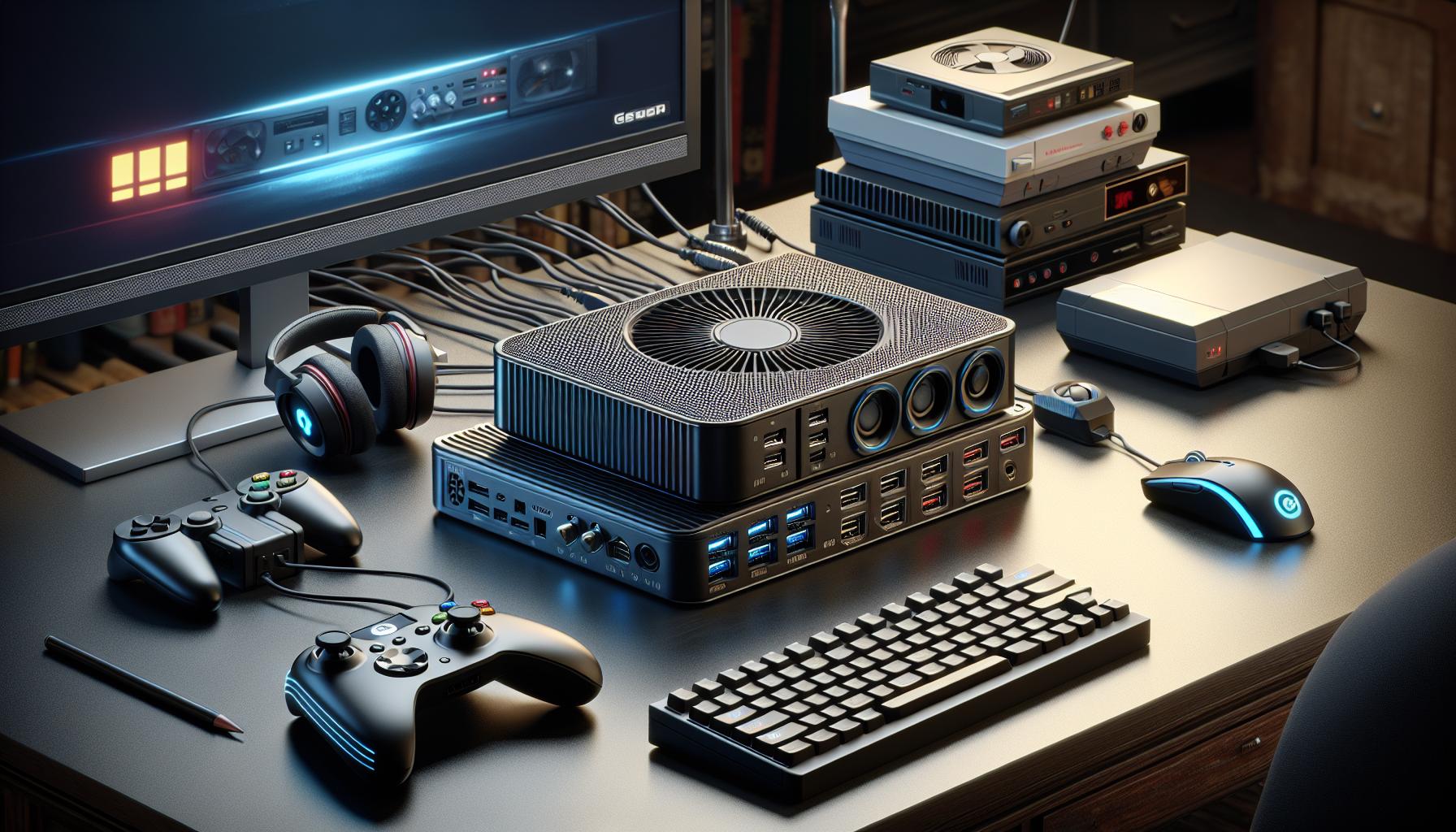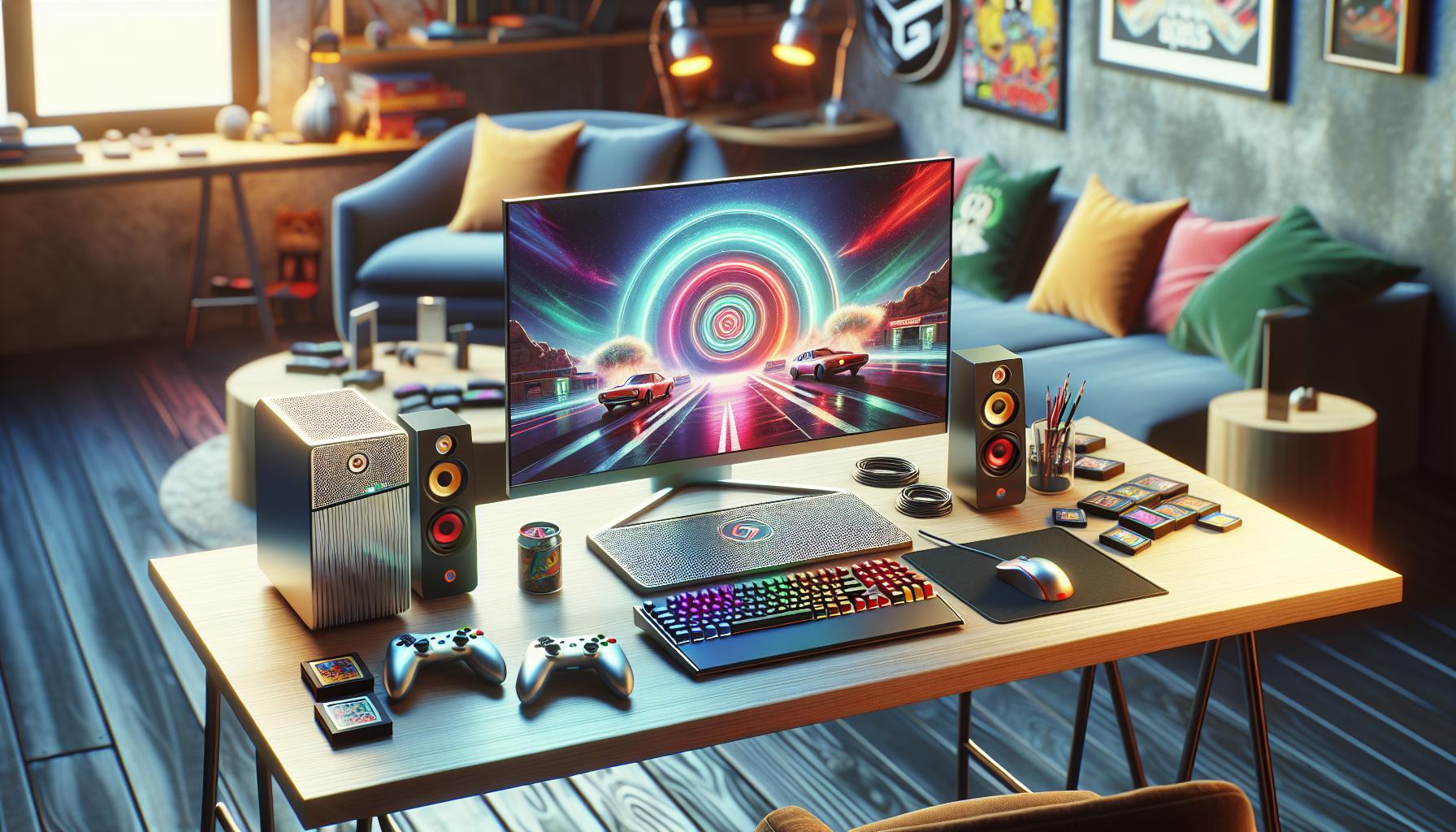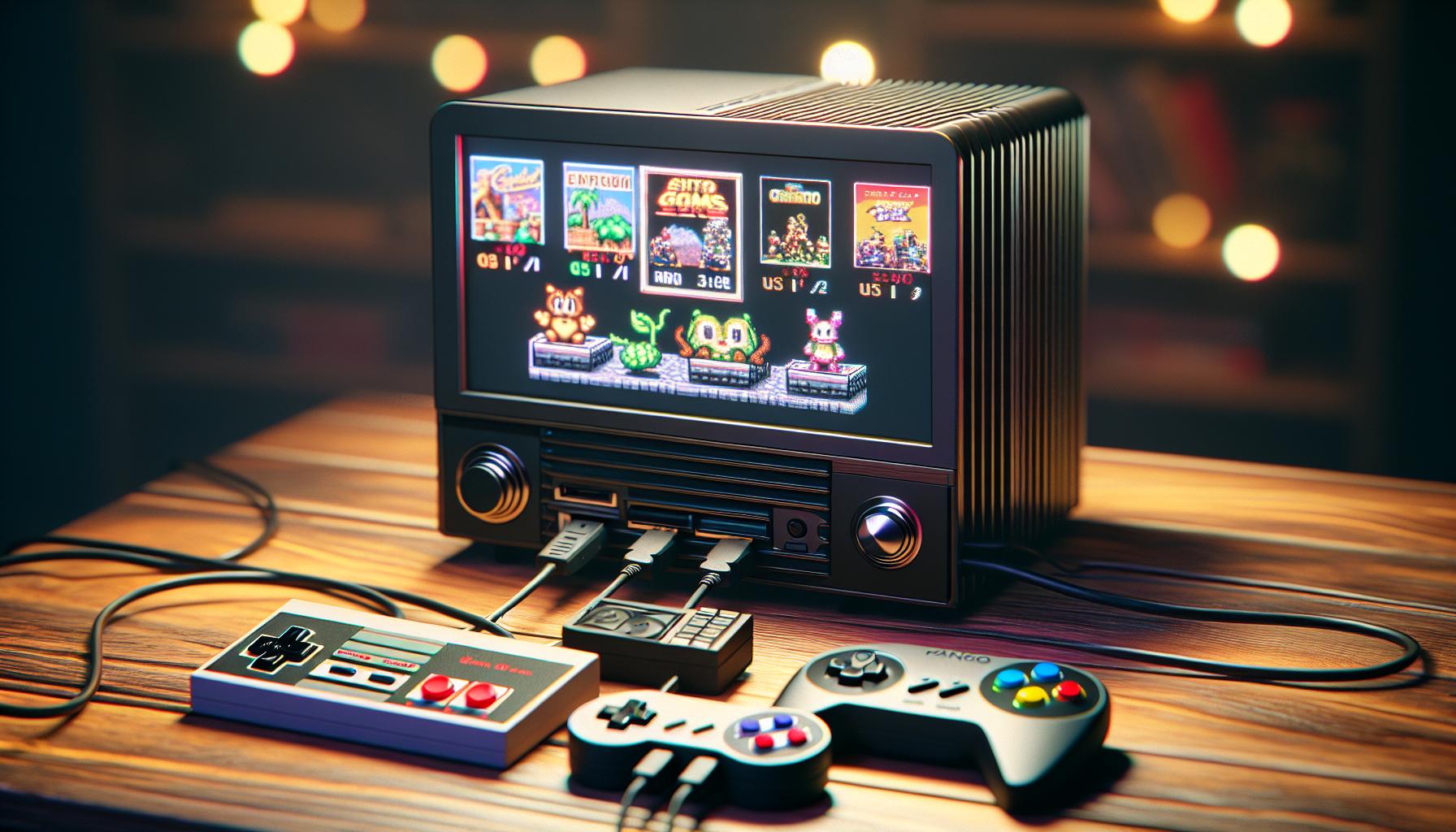Remember those pixelated heroes and 8-bit soundtracks that defined console gaming golden era? While classic consoles gather dust in attics worldwide mini PCs have emerged as the perfect modern solution for retro gaming enthusiasts.
These compact powerhouses pack enough punch to emulate everything from Atari to PlayStation 2 while taking up less space than a sandwich. They’re transforming living rooms into time machines letting gamers relive their favorite classics without the hassle of hunting down vintage hardware or dealing with temperamental cartridges. And the best part? Today’s mini PCs won’t break the bank or dominate your entertainment center like traditional gaming setups.
Mini PC for Retro Gaming
A mini PC for retro gaming combines modern computing power with compact design to emulate classic video game systems. These specialized computers run emulation software that replicates the hardware of vintage gaming consoles, such as Nintendo Entertainment System, Sega Genesis or PlayStation 1.
Key components of retro gaming mini PCs include:
- Processing units optimized for emulation tasks
- Solid-state storage for ROMs and game files
- Multiple USB ports for controllers
- HDMI output for modern displays
- Compact form factor under 8 inches in size
Mini PCs utilize emulation software platforms like:
- RetroArch for multi-system support
- MAME for arcade game preservation
- PCSX2 for PlayStation 2 games
- Dolphin for GameCube and Wii titles
The hardware specifications determine compatibility with specific gaming systems:
| System Era | Required Processing Power | Storage Needs |
|---|---|---|
| 8-bit/16-bit | 1.5 GHz CPU | 32 GB |
| 32-bit/64-bit | 2.5 GHz CPU | 128 GB |
| 128-bit | 3.5 GHz CPU | 256 GB |
These compact systems transform any modern display into a retro gaming station through digital conversion of classic game files. The emulation process creates a seamless gaming experience by mapping original controller inputs to modern USB peripherals while maintaining authentic gameplay mechanics.
Key Features to Look for in a Retro Gaming Mini PC

Selecting an appropriate mini PC for retro gaming requires attention to specific hardware components that impact emulation performance. These essential features determine which gaming systems the mini PC emulates effectively.
Processing Power Requirements
A CPU with high single-core performance delivers optimal emulation results for 8-bit through 32-bit systems. Intel Core i5 processors (7th generation or newer) handle most retro gaming tasks effectively, while AMD Ryzen 5 series offers comparable performance. Dedicated GPUs enhance performance for 3D-era consoles like PlayStation 2 Nintendo GameCube. Modern integrated graphics process 2D games smoothly, though complex 3D titles benefit from discrete graphics cards with 4GB VRAM minimum.
Storage Options and Compatibility
Solid-state drives (SSDs) provide faster load times reduced loading screens for ROM files. A 256GB SSD accommodates extensive game libraries from multiple consoles. M.2 NVMe drives offer superior speed advantages over SATA SSDs, particularly when loading larger ISO files. External USB drives expand storage capacity for growing collections without internal modifications. Compatible file systems include NTFS FAT32 for broader emulator support.
Port Selection and Connectivity
Multiple USB 3.0 ports support simultaneous controller connections for multiplayer gaming. HDMI 2.0 output enables 4K display compatibility with modern TVs monitors. Ethernet ports ensure stable connectivity for online multiplayer emulation. Bluetooth functionality accommodates wireless controllers retro gaming peripherals. Front-panel USB ports provide convenient access for quick controller swaps. Audio outputs include 3.5mm jacks digital optical connections for various sound system setups.
Top Mini PC Options for Retro Gaming

Mini PCs offer varying performance levels for retro gaming emulation, ranging from affordable entry-level systems to high-end powerhouses. The optimal choice depends on the specific gaming era targeted for emulation.
Budget-Friendly Choices
The ASUS PN41 features an Intel Celeron N5105 processor paired with 8GB RAM, making it ideal for emulating 8-bit through 32-bit consoles. The Beelink U59 combines Intel N5095 processing with 16GB RAM at $200, handling NES through PlayStation 1 games seamlessly. For $250, the Minisforum UM350 includes an AMD Ryzen 3 3350U processor capable of running GameCube titles at acceptable framerates. These systems include:
- 128GB-256GB SSD storage capacity
- 4 USB 3.0 ports for controllers
- HDMI output supporting 4K@60Hz
- Built-in WiFi 6 connectivity
Premium Performance Picks
The Intel NUC 11 Enthusiast delivers high-end emulation with its Core i7-1165G7 processor plus dedicated RTX 2060 graphics. ASRock DeskMini X300 accommodates AMD Ryzen 7 5700G APUs, offering exceptional performance for PlayStation 2 emulation. The Minisforum EliteMini HX90 integrates:
- AMD Ryzen 9 5900HX processor
- 32GB DDR4 RAM
- 512GB NVMe SSD
- Dual HDMI 2.0 ports
- USB 3.2 Gen 2 connectivity
These premium options maintain stable framerates in demanding emulators like PCSX2 Dolphin while supporting advanced features including shader caching HD texture packs.
Setting Up Your Mini PC for Retro Gaming

Configuring a mini PC for retro gaming involves installing essential software components optimizing system settings for performance. This comprehensive setup process ensures smooth emulation across multiple gaming platforms.
Essential Software and Emulators
RetroArch serves as the primary frontend for managing multiple emulation cores in a unified interface. Notable emulators include:
- MAME: Arcade system emulation with support for thousands of classic titles
- PCSX2: PlayStation 2 emulation with enhanced graphics capabilities
- Dolphin: GameCube Nintendo Wii emulation with HD texture support
- ePSXe: PlayStation 1 emulation featuring customizable graphics plugins
- PPSSPP: PSP emulation with upscaling resolution options
Additional software requirements include:
- LaunchBox: Frontend organization for ROM libraries
- 7-Zip: Compression utility for managing ROM files
- DirectX: Essential graphics framework for emulation
- Video codecs: K-Lite Codec Pack for media playback
Controller Configuration Tips
USB controllers connect directly to the mini PC with automatic mapping in most emulators. Configuration priorities include:
- Map buttons through the emulator’s control settings interface
- Create separate profiles for different gaming systems
- Enable analog stick support for compatible games
- Configure hotkeys for quick save states access
- Set up controller deadzone adjustments
- 8BitDo Pro 2: Compatible with multiple system layouts
- Xbox Series Controller: Broad compatibility across emulators
- DualSense: Customizable button mapping features
- RetroFighters BrawlerGen: Traditional 6-button layout design
Common Performance Optimization Tricks
Mini PCs achieve optimal retro gaming performance through these key optimization techniques:
System Memory Management
- Close background applications before launching emulators
- Disable Windows visual effects in Performance Options
- Set emulator priority to High in Task Manager
- Configure RAM allocation settings in BIOS for maximum performance
Graphics Settings Adjustments
- Enable GPU hardware acceleration in emulator settings
- Adjust resolution scaling to match original console output
- Set V-sync to eliminate screen tearing
- Apply integer scaling for crisp pixel graphics
Storage Configuration
- Store ROMs on SSD for faster load times
- Create separate folders for different console systems
- Use compressed ROM formats to save space
- Organize save states in dedicated directories
Emulator-Specific Tweaks
- Enable frame skip for smoother gameplay on demanding titles
- Configure audio latency settings for synchronized sound
- Use shader presets optimized for specific consoles
- Apply game-specific patches for compatibility
System Cooling Solutions
- Place mini PC in well-ventilated areas
- Clean air vents monthly with compressed air
- Monitor CPU temperatures during extended sessions
- Apply thermal paste annually for optimal heat transfer
- Update graphics drivers regularly
- Install DirectX runtime packages
- Use lightweight antivirus solutions
- Configure Windows power settings to Performance mode
These optimizations enhance frame rates stability audio synchronization gameplay responsiveness. Each adjustment contributes to creating an authentic retro gaming experience while maintaining system reliability.
Setting up a Mini PC
Mini PCs have revolutionized retro gaming by offering a powerful and space-efficient solution for enthusiasts. These compact powerhouses deliver authentic gaming experiences across multiple classic platforms while providing modern conveniences like save states and controller customization.
Setting up a mini PC for retro gaming is straightforward with the right hardware specifications and software configuration. Whether choosing a budget-friendly option or a premium model gamers can create their perfect retro gaming station tailored to their needs.
The combination of versatility affordability and performance makes mini PCs an excellent choice for anyone looking to dive into the world of retro gaming. They’re the perfect bridge between gaming’s past and present letting enthusiasts relive their favorite classics with modern convenience.



